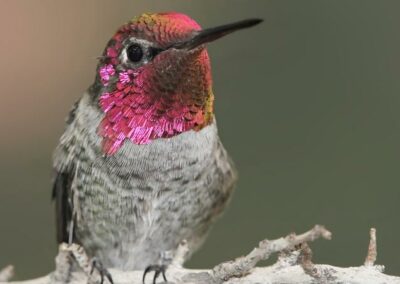Pittman-Robertson and Dingell-Johnson at a glance
The federal government makes matching grants to states and territories for the restoration and management of birds, mammals and sport fish, and for wildlife-associated public recreation. States are required to pay a 25 percent match. The source of these grants are federal taxes levied on various types of items as detailed below.
The legal authorities for such assistance are:
- The Federal Aid in Wildlife Restoration Act, also known as the Pittman-Robertson Act;
- The Federal Aid in Fish Restoration Act, also known as the Dingell-Johnson Act.
These grants are an important source of revenue for all state wildlife agencies. The percentage varies by state, but on average, Pittman-Robertson grants provide 15 percent of agency revenues, and Dingell-Johnson 9 percent, according to this 2017 report.
Pittman-Robertson Act at a Glance:
- Enacted in 1937 to provide federal grants to the states for “wildlife restoration projects.”
- Funds are derived from excise taxes on guns, ammunition and archery equipment.
- Has been amended over the years to allow funds to be used for hunter education, hunter access, and “3R” activities (recruitment, retention and reactivation) to boost the number of hunters, trappers and recreational shooters.
- Required states, as a condition of receiving funding, to pass laws prohibiting the diversion of hunting license fees for anything but the operation of the state’s wildlife agency.
- Defined wildlife broadly, including invertebrates and fish. However, in 1956 the U.S. Fish and Wildlife issued implementing rules narrowing the definition to mammals and birds.
- Created two types of incentives for states to maximize the sale of hunting licenses: 1) the prohibition on diversion of license fees means all the proceeds from license sales stay with the wildlife agency; 2) the formula that determines how much money a state receives is based (in part) on the number of licenses sold in a state.
- Although they fluctuate from year to year, Pittman-Robertson Act revenues have generally increased over time, while the number of hunters has declined for decades.
- Most Pittman-Robertson Act revenues (>90 percent) are generated from taxes on guns and ammunition, and most of those items (78 percent) are not purchased by hunters.
- About 20 percent of Pittman-Robertson Act funds are spent on hunter education and safety programs.
- Allows grants to be given to nonprofits, but only if they certify that no part of the funding will be used “for an activity, project, or program that promotes or encourages opposition to the regulated hunting or trapping of wildlife or to recreational shooting activities.”
- In 2019 Congress passed the “Modernizing Pittman-Robertson Act” which lifted the ban on using Pittman-Robertson Act funds for “R3” activities (“recruit, retain and reactivate”) designed to boost the number of hunters.
Dingell-Johnson Act at a Glance:
- Enacted in 1950 to provide federal grants to the states for projects to “restore and manage” sport fish.
- Funds are derived from excise taxes on motorboat fuel, small engine fuel (e.g. lawn mowers, snow blowers, etc.) fishing tackle, and tariffs on imported yachts and fishing equipment.
- Required states, as a condition of receiving funding, to pass laws prohibiting the diversion of fishing license fees for anything but the operation of the state’s wildlife agency.
- Created two types of incentives for states to maximize the sale of fishing licenses: 1) the prohibition on diversion of license fees means all the proceeds from license sales stay with the wildlife agency; 2) the formula that determines how much money a state receives is based (in part) on the number of licenses sold in a state.
- Although they fluctuate from year to year, Dingell-Johnson revenues have generally increased over time, while the number of anglers has remained steady for decades.
- Most Dingell-Johnson revenues (more than two-thirds) are generated from tax on fuel for motorboats and small engines. An estimated one-third of that fuel is not used in fishing.
- Dingell-Johnson funds are used to raise and stock nonnative fish that often harm native fishes and other aquatic organisms.












